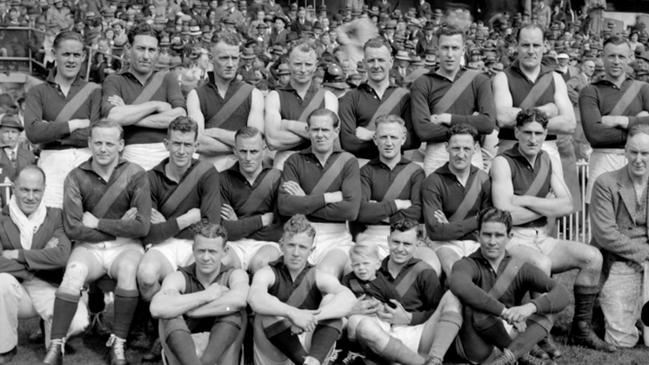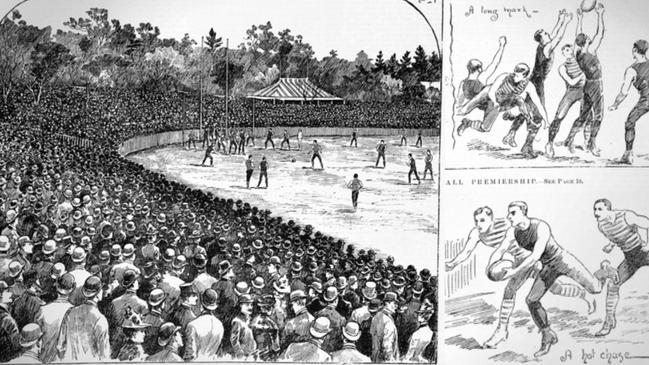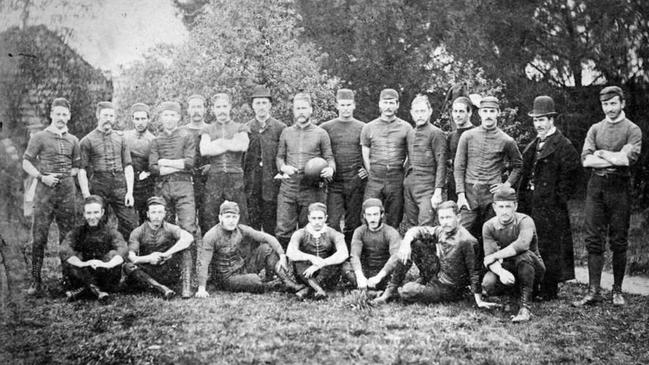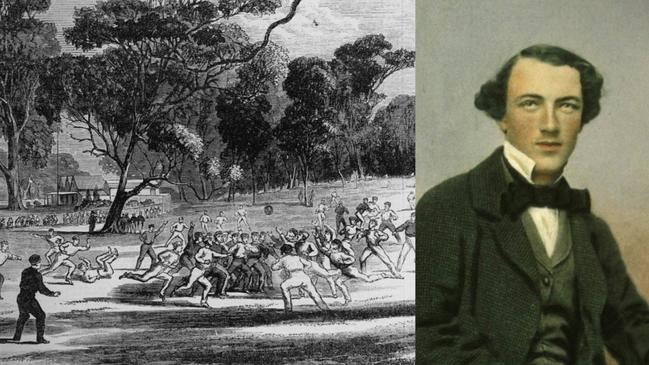Mitchell Toy: The controversial rule that almost ended AFL history
Melbourne’s most beloved game could have looked very different to its current format if history had taken a slightly unorthodox course.

Victoria
Don't miss out on the headlines from Victoria. Followed categories will be added to My News.
Like magic coffee and paying ridiculously high prices for apartments, Australian Rules Football is part of our unique and wacky way of doing things in Melbourne.
It could be called the platypus of football codes – bits and pieces from all over the place combined with its own inimitable character.
But our beloved game could have looked a lot different – for example, throwing the ball could have been allowed – if history had taken a slightly different course.

In the early days of the game there were two rival leagues vying for support and resources.
A huge defection of teams from one league to the other helped cement support for what became the AFL, while the other league, called the Victorian Football Association, took a back seat.
Clubs such as Collingwood, Essendon and Melbourne who chose the right league early on, saw wonderful success, while clubs from other suburbs diminished, or died out entirely.
Had the VFA won the war of hearts and minds, its own slightly different code of rules would have become dominant, and could have changed the face of the game.
A LEAGUE OF ITS OWN
The origin of the greatest game on Earth is steeped in foggy curiosity.
It includes the possibly mythological connection to the indigenous game of Marngrook, the need to keep cricketers fit over the summer and the vision of sportsmen such as Tom Wills, a brilliant but disturbed trailblazer who helped set up the game before dying tragically of suicide while in the grip of alcoholism.
After a bumpy start, the game formed an informal association of teams including the Melbourne Football Club.
In 1877 the first formal Football League was created, named the Victorian Football Association, including clubs from Melbourne, Hotham, Albert Park, Carlton and St Kilda.

The league handled fixtures, administration and the standardisation of rules, and gradually grew to thirteen clubs by the 1890s including Fitzroy, Footscray, Essendon, Richmond, Williamstown, South Melbourne, Collingwood, Geelong and Port Melbourne.
While things went well on the field, a big battle was brewing behind the scenes over distribution of finances by the VFA.
Some clubs had more money than others, and a proposal was made to split ticket sales equally among the VFA member clubs.
That would mean stronger clubs such as Melbourne, Essendon and Collingwood, who tended to take more in ticket sales, would have to effectively hand over more cash to the poorer clubs.
This among other arguments led to a bold plot by the stronger clubs to pull out of the VFA and form their own league.
THE BIG DEFECTION
In 1897 the plan swung into action and Melbourne, Essendon, Collingwood, Geelong, Fitzroy and Melbourne pulled out of the VFA.
St Kilda and Carlton were called to follow, which they did.
The wounded VFA carried on in competition with the newly formed Victorian Football League (VFL) for decades, and recruited new clubs including Prahran, Brighton, Northcote, Preston and a rival Essendon club.
Appropriately, the leagues showed little else but hostility towards each other.
For many years a pact was held that no player could be poached by the other league, and anyone who expressed a desire to defect from the VFA to the VFL, or vice versa, was seen as a traitor.

But as the VFL gained momentum, the VFA was viewed by many Victorians as second rate.
When VFA teams got to the top of the pile, they began contemplating a move to the VFL.
Richmond, Footscray, Hawthorn and North Melbourne defected one by one from the VFA in the early 20th Century, helping to cement the VFL as the pre-eminent league in Victoria.
However the VFA, free of influence, had the power to set its own on-field rules.
Early on they experimented with the number of players per team permitted on the field, ranging from 16 to 20.
Then in the late 1930s the VFA split from convention and allowed throwing the ball – a move that had previously been taboo – so long as the throw was underarm and below the height of the player’s shoulder.
The move proved popular and sped up the game, pleasing spectators.

Towards the middle of the 20th Century the VFA was building steam and broke its agreement not to poach players from the VFL, offering stars better money and a more exciting playing environment.
Despite talks to amalgamate the two leagues, they continued in competition for decades longer.
In the 1980s and 90s as the VFL expanded around Australia, an agreement was eventually reached to make the VFA the junior league of the new AFL.
The 1994 season was the VFA’s last, and its clubs formed, ironically, the new VFL as it was named from 1996.
The convoluted path of history has led to AFL dominance but, if things had gone just slightly differently, chucking the ball could have prevailed over the humble handball.




